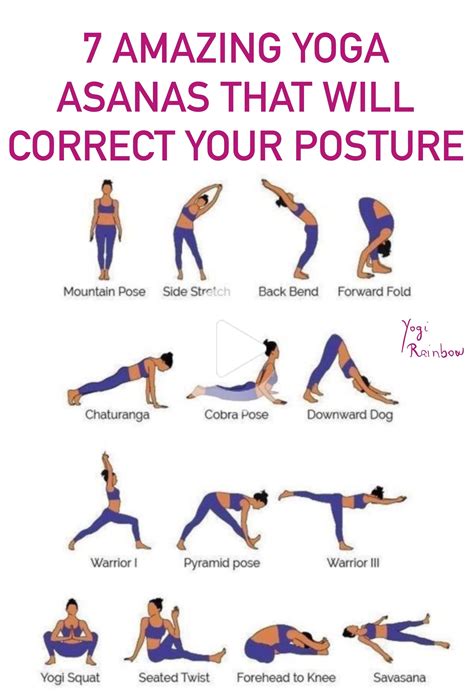Essential Yoga Practices for Pregnant Mothers: A Comprehensive Guide for Well-being
Yoga offers incredible benefits for pregnant mothers, supporting physical, emotional, and mental health throughout pregnancy. With the right yoga practices, expecting mothers can prepare their bodies for childbirth, improve flexibility, manage stress, and maintain overall health. However, not all yoga poses are safe during pregnancy, and it’s crucial to understand which exercises are best suited to each trimester. This article explores the best yoga practices for pregnant mothers, providing practical guidance on key concepts, historical context, current trends, ethical considerations, and much more.
Introduction
Prenatal yoga has emerged as a popular practice for expecting mothers seeking physical and mental relief. It focuses on adapting yoga techniques to meet the changing needs of the body during pregnancy. The key lies in the right balance between maintaining a healthy body and ensuring the safety of both the mother and the baby. In this guide, we provide a detailed analysis of yoga poses, breathing techniques, and mindfulness exercises, discussing their benefits, limitations, and practical applications for all stages of pregnancy.
Key Concepts
- Prenatal Yoga: A modified form of traditional yoga designed to accommodate the needs of pregnant women.
- Trimester-Specific Practices: Certain poses and breathing techniques are more suitable during different stages of pregnancy.
- Relaxation and Breathwork: Key elements that help manage stress, improve oxygenation, and prepare for labor.
- Safety Considerations: Avoiding poses that put undue pressure on the abdomen or overstretch muscles.
- Mind-Body Connection: Yoga supports emotional well-being by integrating breath, movement, and mindfulness.
Historical Context
Yoga has been practiced for thousands of years, but its specific adaptation for pregnancy is relatively recent. Ancient yoga texts such as the Hatha Yoga Pradipika and the Yoga Sutras did not explicitly address pregnancy, but certain principles, such as breath control (pranayama) and mindfulness (dhyana), have long been known to benefit the pregnant body. Prenatal yoga, as it’s practiced today, emerged in the mid-20th century as Western instructors began to emphasize the therapeutic benefits of yoga for women during pregnancy.
Current State Analysis
Today, prenatal yoga is widely recognized for its numerous benefits. However, modern debates exist around the degree to which yoga can safely be practiced throughout pregnancy. Some yoga experts advocate for gentler approaches, while others propose that with proper guidance, pregnant women can still engage in more vigorous yoga styles such as Vinyasa or Ashtanga. The current trend is to offer trimester-specific classes that adapt to the growing needs and limitations of the pregnant body. Still, disagreements about the intensity of practice remain a topic of conversation among yoga practitioners and health professionals alike.
Practical Applications
When practicing yoga during pregnancy, it’s essential to focus on safety and comfort. Below is a breakdown of recommended yoga practices by trimester:
| Trimester | Recommended Poses | Benefits | Precautions |
|---|---|---|---|
| First Trimester | Cat-Cow, Easy Pose, Seated Forward Bend | Improves flexibility, reduces nausea, enhances mental calmness | Avoid intense twisting and core-centric poses |
| Second Trimester | Warrior II, Extended Side Angle, Bridge Pose | Strengthens legs, improves posture, alleviates back pain | Skip poses that put pressure on the abdomen |
| Third Trimester | Wide-Legged Child’s Pose, Butterfly Pose, Breathing Exercises | Opens hips, encourages relaxation, prepares for labor | Avoid poses lying flat on your back |
Case Studies
Consider the following case studies to understand how prenatal yoga has benefited pregnant mothers:
- Case 1: A 32-year-old mother practicing prenatal yoga during her second pregnancy reported less lower back pain and greater mental clarity in comparison to her first pregnancy without yoga. Poses such as Warrior II and Extended Side Angle helped her maintain strength and balance.
- Case 2: A 28-year-old first-time mother in her third trimester benefited from breathing exercises (Pranayama) and meditation to manage labor anxiety. These techniques helped her remain calm and centered during delivery.
- Case 3: A 35-year-old woman at high risk of preterm labor used modified prenatal yoga, focusing on gentle poses and mindfulness, which allowed her to manage stress and promote a healthier pregnancy without exacerbating medical risks.
Stakeholder Analysis
Various stakeholders play a role in determining the safety and applicability of prenatal yoga practices:
- Healthcare Providers: Obstetricians and midwives who may recommend yoga as a complementary practice during pregnancy.
- Yoga Instructors: Professionals trained in prenatal yoga who guide mothers through safe and beneficial practices.
- Pregnant Mothers: The primary beneficiaries, who must consider personal health conditions and comfort levels when engaging in yoga.
- Family Members: Support systems that encourage pregnant women to maintain their mental and physical well-being.
Implementation Guidelines
To implement prenatal yoga safely, consider the following steps:
- Consult with a healthcare provider before starting prenatal yoga, especially if high-risk conditions are present.
- Seek classes led by certified prenatal yoga instructors who understand trimester-specific modifications.
- Listen to the body and avoid poses that cause discomfort or strain.
- Focus on breathing and relaxation techniques, which are crucial during labor preparation.
- Stay hydrated and avoid overheating during practice.
- Use props like blocks or straps to support the body and prevent overstretching.
Ethical Considerations
Prenatal yoga instructors have an ethical responsibility to ensure the safety of both the mother and the baby. This involves:
- Providing modifications and alternatives for poses that could pose risks.
- Avoiding practices that overexert or compromise the health of the mother.
- Encouraging open communication between the instructor and the pregnant woman about any physical limitations or concerns.
- Promoting a non-competitive environment, where the focus is on well-being rather than physical prowess.
Limitations and Future Research
Despite the benefits, there are limitations to current research on prenatal yoga. Many studies rely on self-reported outcomes, which can introduce bias. Additionally, more research is needed to explore the long-term impact of prenatal yoga on labor outcomes, mental health, and postpartum recovery. Future studies should also examine the effects of different yoga styles and intensities on pregnancy to establish clearer guidelines for practitioners.
Expert Commentary
Experts in both yoga and maternal health emphasize that prenatal yoga offers a holistic approach to pregnancy, integrating physical, mental, and emotional well-being. While debates over the intensity of practice exist, the general consensus is that yoga can be safely adapted for pregnant women when guided by experienced instructors. As prenatal yoga continues to grow in popularity, its accessibility to diverse populations should remain a priority, ensuring that all pregnant women can benefit from its advantages regardless of their background or prior experience.
Push Your Boundaries: 10 Yoga Moves to Challenge Your Limits
Yoga is not just about relaxation; it’s about pushing boundaries and discovering new physical and mental limits. Whether you’re a beginner or an experienced yogi, these 10 yoga poses will help you challenge your body and mind, pushing you to achieve more than you thought possible. This article is for anyone looking to advance their practice, overcome personal hurdles, or simply discover new ways to deepen their connection with yoga.
Introduction
Yoga is an ancient practice designed to unite the body, mind, and spirit, offering numerous benefits ranging from stress relief to increased flexibility and strength. However, many yoga practitioners find themselves in a routine, plateauing in their progress. It’s essential to step outside your comfort zone, try new poses, and test your boundaries to continue growing in your yoga journey. This article introduces 10 challenging yoga moves that will push you physically and mentally, taking your practice to the next level.
Key Concepts
- Mind-Body Connection: Yoga encourages the connection between mental focus and physical movement.
- Progressive Overload: To grow stronger, you need to continually challenge your muscles and increase difficulty.
- Flexibility vs. Strength: Yoga helps build both, and these moves emphasize pushing both limits simultaneously.
- Adaptability: While these moves are advanced, they can be modified for practitioners at various levels.
Historical Context
Yoga has evolved over thousands of years, originating in India as a spiritual practice. Asana (physical postures) was not the main focus of early yoga; it was primarily about meditation and mental discipline. However, modern yoga in the West has evolved to place a greater emphasis on physical postures as a way to unite the mind and body. The challenging poses outlined here build on this tradition, blending the ancient principles of yoga with modern understandings of anatomy, strength, and flexibility.
Current State Analysis
Today, yoga is practiced by millions worldwide, but many practitioners reach a comfort level in their routine and stop progressing. Advanced poses like arm balances, deep backbends, and inversions offer opportunities to step out of this stagnation and push the limits of what the body can achieve. Whether practicing in studios, at home, or through virtual classes, it’s important to incorporate more challenging poses to continue growth.
Practical Applications
Challenging yoga poses are not just about showing off flexibility or strength. They teach resilience, patience, and self-awareness. By incorporating these moves into your practice, you can build physical stamina, increase your mental focus, and enhance your overall well-being. Each of the following 10 poses comes with recommended tips for safe practice, modifications for different skill levels, and insights on their mental and physical benefits.
Case Studies
| Pose | Before Challenge | After Challenge |
|---|---|---|
| Handstand (Adho Mukha Vrksasana) | Couldn’t balance without a wall | Gained the strength and control to hold it independently |
| Scorpion Pose (Vrischikasana) | Felt too afraid to even try it | Conquered fear and built necessary shoulder strength |
| Wheel Pose (Urdhva Dhanurasana) | Limited in back flexibility, causing discomfort | Increased back flexibility through progressive stretching |
| Crow Pose (Bakasana) | Difficulty balancing on arms | Achieved greater core strength and arm balance |
| King Pigeon Pose (Kapotasana) | Hamstring and hip flexibility limited | Opened hip joints and stretched hamstrings gradually |
Stakeholder Analysis
The key stakeholders in challenging yoga poses include yoga practitioners, yoga instructors, and the broader health and wellness community. Practitioners aim to progress their skills and deepen their practice, while instructors are responsible for guiding them safely. Health professionals also have an interest in promoting practices that enhance mental and physical well-being. For beginners, there may be fear of injury or difficulty, which stakeholders must consider when designing progressive practices.
Implementation Guidelines
- Start Slow: Focus on form and alignment before attempting more advanced variations.
- Use Props: Blocks, straps, and walls can aid in mastering difficult poses.
- Listen to Your Body: Don’t force poses; progress will come with time.
- Modify as Needed: Make adjustments based on your flexibility and strength levels.
- Consistency is Key: Practice these poses regularly to see improvement.
Ethical Considerations
As yoga grows in popularity, there is a growing concern about the commercialization of the practice and the risks of promoting challenging poses as a goal for achievement, rather than for personal growth. Instructors have an ethical responsibility to prioritize the safety of their students over pushing them to achieve advanced poses that may not be right for their bodies. Additionally, it’s important to ensure that yoga remains inclusive, with adaptations for people of all abilities and body types.
Limitations and Future Research
While advanced yoga poses offer many benefits, they are not suitable for everyone. Future research could explore the benefits of these poses for specific populations, such as older adults, individuals with disabilities, or people recovering from injury. Additionally, more studies could look into the mental health benefits of challenging poses, particularly how overcoming fear and discomfort can contribute to psychological resilience.
Expert Commentary
Yoga experts agree that pushing your limits in your practice can lead to greater physical and mental benefits, but it must be done mindfully. Dr. Sarah Thompson, a yoga therapist, emphasizes, “The key is to challenge yourself without letting ego drive your practice. Advanced poses are tools for growth, not badges of honor.” Yoga instructor and author John Matthews adds, “Inversions and backbends can be transformative if practiced with care and patience.”
As you work through these poses, remember to approach them with a mindset of curiosity and self-compassion. Your journey with yoga is unique, and what matters most is the personal growth that comes from challenging your limits in a safe, sustainable way.








